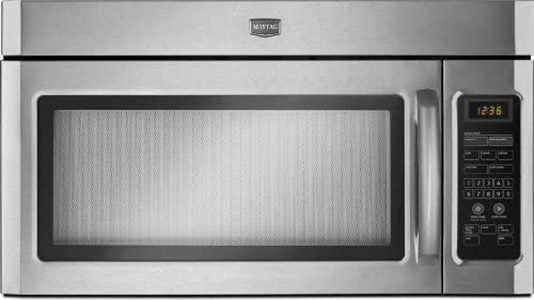
DIRECT VENT:
Microwave over the range venting typically occur in two different ways. In the first example, the OTR will vent through the manufacturer installed grease or carbon filter, then directly through an exhaust port that is ducted to the outside of the structure. Typically there might be a cabinet installed over the microwave, and in the cabinet may be exhaust duct work. Normally, this type of microwave over the range OTR will have a full frame door, with no panel above it, as depicted here.
RECIRCULATE:
In the second example below the microwave over the range OTR will exhaust through the manufacturer installed grease or carbon filters, then recirculate the air back into the home. In many cases there are visible vents at the top of the microwave face frame, or a top panel that opens as a flap when the exhaust fan of the microwave is activated.


In either example, the cooking by-products are filtered through the filter element, which is important! Capturing as much of the by-products as possible is the most crucial portion to any kitchen venting solution. Maintaining a clean filter/and or the use of carbon based filters is recommend. Microvisor provides the additional capture zone necessary in order to complete your microwave over the range venting function.
Once the MICROVISOR® is installed, more effective containment is achieved, and improved updraft is accomplished. Less grease on cabinets and ceilings, reduced on-set of fire alarms, and better exhausting performance of your microwave over the range is what you can expect. We hope that you have found this Microwave Over the Range Venting Options Guide useful.
